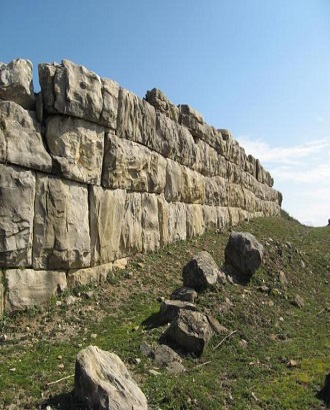

Walls
Ugolini had recognized an evolution of the walls from the late fifth century B.C. or the beginning of the fourth until the Hellenistic age , with progressive expansion , substantially on the basis of diversity of construction techniques. In all probability , the initiation of construction of the walls took place east of the summit of the hill , where are used huge rectangular blocks of limestone, taken from the rock of the hill.
Two stratigraphic surveys carried out in the walls of the northern section of the town and in the central sector have established a date of the first half of the third century BC. Here is a double wall built in trapezoidal pseudoisodomic way using the usual local limestone.
About a century after the implantation of the original part that defended the hill with huge blocks in the east , the urban area expanded to the west in the Hellenistic period when Phoinike is going to be the most outstanding city of the koinon.
Research of the walls have therefore led to a clearer definition of the development of the city : a nucleus formed in the eastern sector of the hill ( middle decades of the fourth century BC.) , then expanded considerably to the west in the first half of the third century .